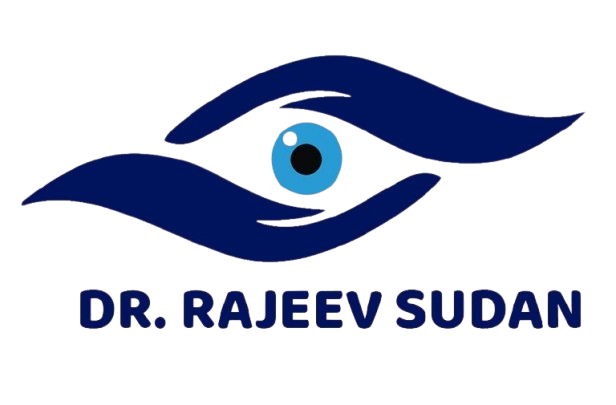"Healthy eyes, beautiful eyes"
DRY EYES
"Let your eyes tell a beautiful story. Clearer vision, brighter confidence."
Dry Eyes
Dry eyes occur when your eyes don’t produce enough tears or when the tears evaporate too quickly. This condition can cause discomfort, a gritty sensation, burning, redness, and even blurry vision. Common triggers include extended screen time, aging, certain medications, and environmental factors like wind or dry air. Effective treatments range from artificial tears and prescription eye drops to lifestyle adjustments and advanced therapies.
Why Choose Us

Trusted Expertise
Our experienced team of optometrists and ophthalmologists specializes in diagnosing and treating dry eyes with precision and care. Your vision is our priority—and it's in expert hands.

Comprehensive Care
We go beyond symptom relief. Our holistic treatment approach is designed to target the root cause of dry eyes, supporting long-term comfort and improving your overall eye health.

Easy Access, Always Nearby
Here your care is led by Dr. Rajeev Sudan, a renowned eye specialist known for his patient-first approach. His dedication, precision, and years of experience ensure you receive personalized treatment that truly makes a difference.

Specialized Care for Your Eyes
Your vision deserves nothing less than expert attention. With advanced diagnostic tools and years of clinical experience, we provide tailored treatments that address your unique eye health needs. From routine checkups to complex conditions, your eyes are in expert hands.
Symptoms of Dry Eye
Common Signs and Symptoms of Dry Eye:
A burning or stinging feeling in the eyes
Feeling like there’s sand or something stuck in your eye
Itchy, irritated eyes that don’t feel comfortable
Red or bloodshot eyes
Sensitivity to bright lights
Blurry vision that gets better after blinking
Eyes that water too much (a reflex to dryness)
Sticky or stringy discharge from the eyes
Discomfort while reading, watching TV, using a computer, or doing detailed tasks
What Causes Dry Eye?
Dry Eye can be triggered by various factors, often working together. Some of the most common causes include:
Aging: Natural aging reduces both the quantity and quality of tears produced by the eyes.
Environmental Factors: Exposure to wind, heat, air pollution, air conditioning, smoke, or dry climates can contribute to faster tear evaporation.
Screen Time & Work Habits: Staring at screens for long periods can reduce your blink rate, causing eye dryness and fatigue.
Medical Conditions: Autoimmune diseases like Sjogren’s Syndrome, Rheumatoid Arthritis, Systemic Sclerosis, Thyroid issues, and Steven Johnson Syndrome can lead to dry eyes.
Hormonal Changes: Particularly during menopause, hormonal fluctuations can affect tear production.
Medications: Certain drugs such as diuretics, antihistamines, antidepressants, and antimuscarinics may reduce tear secretion.
Nutritional Deficiencies: Lack of Vitamin A can impair eye surface health and tear film stability.
Contact Lens Wear: Long-term or improper contact lens use can disrupt natural tear balance.
Radiation Therapy: Treatments targeting the head or neck may damage tear-producing glands.
Refractive Eye Surgery: Procedures like LASIK and PRK can affect nerve sensitivity and tear production.
Eye Infections or Inflammation: Conditions like Blepharitis or other chronic eye diseases can contribute to dryness.
Lifestyle Habits: Smoking, infrequent blinking, and poor hydration can all promote faster tear evaporation.
Meibomian Gland Dysfunction (MGD): Blockage or inflammation of these glands reduces the oily layer of tears, leading to faster evaporation.
What is Meibomian Gland Dysfunction (MGD)?
Meibomian Gland Dysfunction (MGD) is a condition where the tiny oil-producing glands in the eyelids (called Meibomian glands) become blocked or don’t function properly. These glands are responsible for producing the outer oily layer of your tear film, which prevents tears from evaporating too quickly. When this oily layer is deficient, it can lead to dry, irritated eyes.
MGD can affect anyone, but certain groups are more at risk — including people who wear contact lenses regularly, individuals who use digital devices for long hours (due to reduced blinking), and postmenopausal women.
How is MGD Diagnosed?
Diagnosis of MGD involves a detailed clinical eye examination. Your eye specialist may perform specialized tests to evaluate the health of your tear film and ocular surface. One of these tests includes Meibography, a non-invasive imaging technique that captures detailed images of the Meibomian glands.
These evaluations help the doctor understand the extent of gland dysfunction and tailor a treatment plan specifically suited to your condition — improving comfort and eye health outcomes.
How is Dry Eye Managed?
Managing dry eye involves both lifestyle adjustments and targeted treatments to relieve symptoms and improve tear film stability. Here are some commonly recommended steps:
Avoid Dry Environments: Limit exposure to dry, windy, or air-conditioned environments. Use a humidifier if you must stay in such conditions for extended periods.
Protect Your Eyes: Avoid direct airflow from heaters, fans, or air conditioners to the face. Sit away from open heat sources such as gas stoves or furnaces.
Use Artificial Tears: Apply lubricating eye drops (artificial tears) regularly to keep the eyes moist and comfortable.
Blink Consciously: Make a habit of blinking fully and frequently, especially when using digital screens, to support tear distribution.
Stay Hydrated: Drink at least 8–10 glasses of water daily to support overall eye health.
Avoid Smoke Exposure: Refrain from smoking and try to avoid smoky or polluted environments.
Wear Protective Eyewear: Use wraparound glasses or sunglasses outdoors to shield eyes from wind and sunlight.
Cool Compresses: To relieve burning, itching, or irritation, apply periodic cold, moist compresses over the closed eyes.
How Do Computers Affect the Eyes?
Prolonged use of digital screens—computers, tablets, or smartphones—can lead to a condition known as Computer Vision Syndrome (CVS) or Digital Eye Strain. This is a common issue among frequent users and may cause a range of visual and physical symptoms, including:
Eye strain or discomfort
Headaches
Blurred or fluctuating vision
Dry or irritated eyes
Difficulty focusing
Increased sensitivity to light
In many cases, symptoms also extend beyond the eyes and may include:
Neck, shoulder, or back pain
Wrist or hand discomfort (especially with prolonged typing or mouse use)
General fatigue
Reduced visual efficiency and productivity
These issues typically result from poor posture, inadequate lighting, screen glare, improper viewing distance, or infrequent blinking.

About Us
Dr. Rajeev Sudan, MD (AIIMS) is a cataract, glaucoma and refractive surgeon, with experience of more than 20 years. He is a post graduate and senior resident from Dr. RP centre, AIIMS and has received a honour of best resident award for an excellence in patient care at AIIMS. He has done more than 15000 surgeries including complex cataract , refractive and glaucoma surgeries.
Quick Links
Contact
A 6, Outer Ring Rd, near Savitri Flyover, Block A, Chittaranjan Park, New Delhi, Delhi 110019
rrsudan20@gmail.com
+91- 9958952302